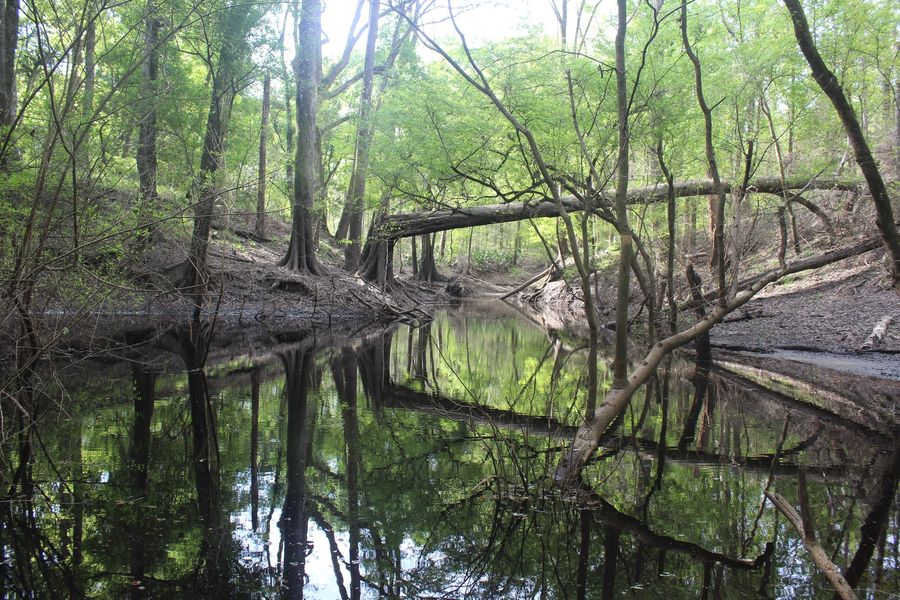On a chilly Friday morning, my family and I head up Highway 41. Thirty minutes northeast of historic White Springs we turn onto unpaved unpaved roads. Moss-draped limbs of large grandaddy oaks arch over a dirt lane leading to a densely wooded tract surrounded by pine plantations and agricultural fields. My husband parks alongside the shoulder, between white sand and tall weeds. Clouds of mosquitoes escort us to a group of Floridians and officials standing in front of placards and information tables. We have come to celebrate the dedication of the seventh Florida State Geological Site.
Didn’t know Florida had State Geological Sites? Neither did I!
We gather in an open area to applaud Florida’s newest addition, the Jennings Bluff Tract, encompassing the Dead River swallet. We are writers, kayakers, students, Hamilton County commissioners, geologists from the Florida Geological Survey, and employees of the Suwannee River Water Management District. Briefly describing the feature, Florida State Geologist Harley Means introduces us to the site. We descend broad cement steps to an observation point on a firm muddy bank.
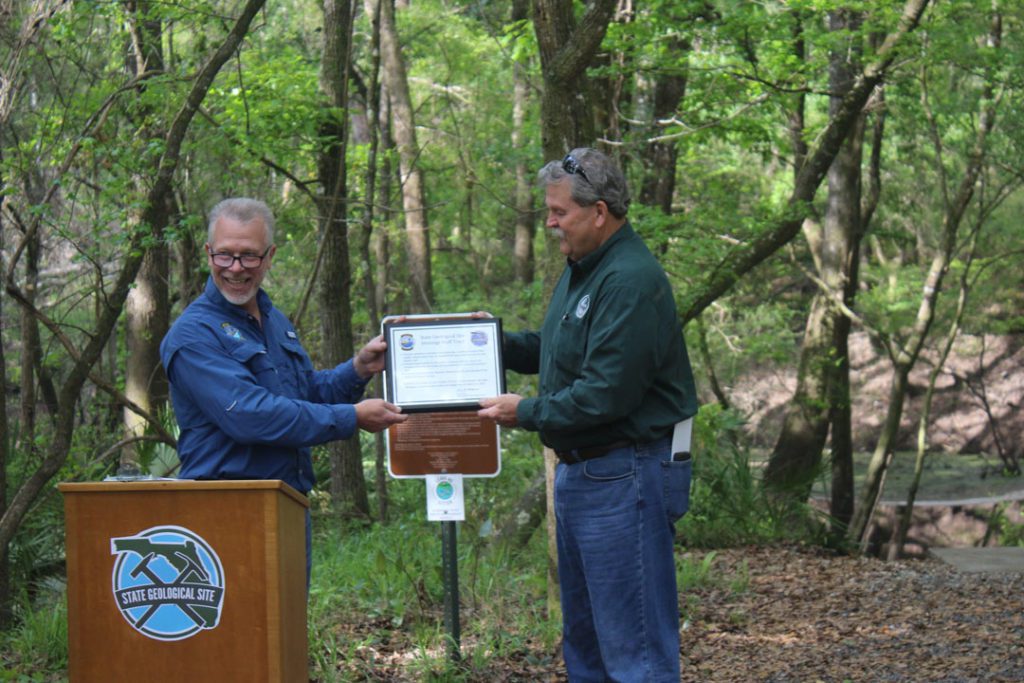
Leaves race past on a dark tannic river swollen by recent rains. Located in the Alapaha trace where the Dead River disappears into a rocky opening underground, the river enters Florida’s dynamic subterranean landscape, resurging at Alapaha Rise and Holton Creek Rise, 10 miles away. The water then joins the wide Suwannee River about halfway down its 246-mile run to the Gulf of Mexico.
Florida’s underground is a mesmerizing wonderland of crevices and caverns transporting water across miles and acres, under farms, businesses, and homes. As we gain deeper understanding of how our drinking water moves through this karst landscape, Floridians are working to protect the most unique and vulnerable of our state’s geology.
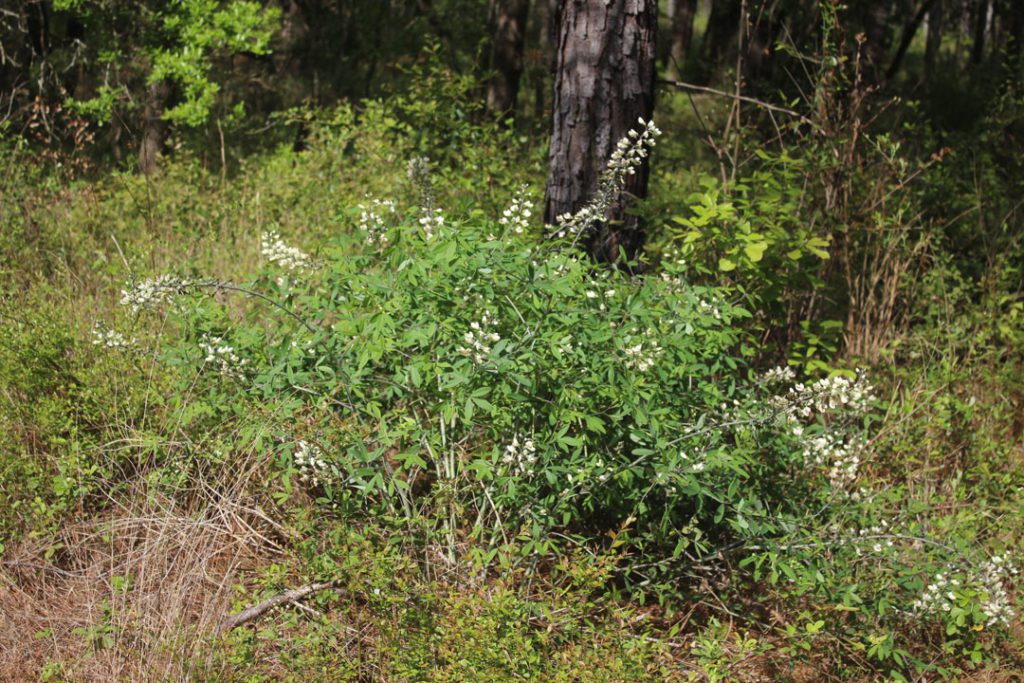
Thus, a Florida State Geological Site.
For a place to be cool enough to receive this designation depends on four provisions. The proposed site must have educational value, be publicly accessible and provide a unique chance to learn about the feature. The site must have geological significance of hydrogeology, karst features, fossils and minerals, evidence of geologic history, and exposure of formations. The proposed site shows a geoheritage, proof that the site played a role in human history. And finally, proof that designation as a State Geological Site will protect sensitive geologic features.
Jennings Bluff is the first of the seven state geological sites to be independent of a state park.
The Alapaha River originates in southern Georgia near Cordele and flows southeast and south over 175 miles into Florida near Jennings. The Alapaha is old and follows an ancient riverbed known as a trace. The river is intermittent in Florida during low water, disappearing into the subterranean Floridan aquifer. More than 475 acres along the Alapaha River, the land surrounding the Dead River and known as the Jennings Bluff Tract, is owned and managed by the Suwannee River Water Management District. The Dead River is a tributary of the Alapaha. Some of the river flows into the Dead River Sink, on what is called a blind valley, where water flows into a side channel to a hole in the ground known as a swallet. During times of low water, the Dead River can be completely dry.
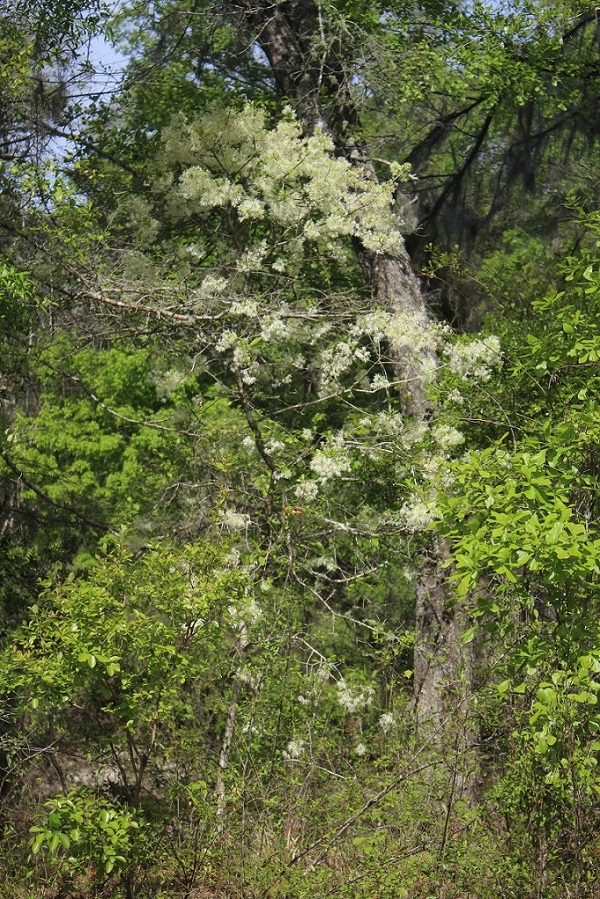
While the water was remarkably high during our visit, silicified oyster beds, shells of honey-hued tones of quartz, and other fossils are typically found along the rocky outcrops when exposed by lower water levels. Kayakers can enjoy the various water features; although at times portaging may be necessary. Hikers can appreciate the variety of vegetative life, planted and native pine, magnolia, oak. Horseback riding, bird watching, and fishing are permitted on the property. A restroom facility is under construction. Anyone who visits should be aware of the mosquitoes. Ticks and chiggers are reported to be abundant as well.
On our visit I noticed white flowers everywhere – dogwood standing in glowing glory among dark pine trunks on the drive in. Along a side road we encountered clusters of white wild indigo flinging showy bouquets into the air on long stems. Saltbush standing tall, branches loaded with plumes of fluff. Sparkleberry shrubs dangled early fruit along the river’s edge. “Leave those for the bears,” advised Christopher Williams professional geologist with the Florida Geological Survey, when asked if he had tried eating the tiny berries.
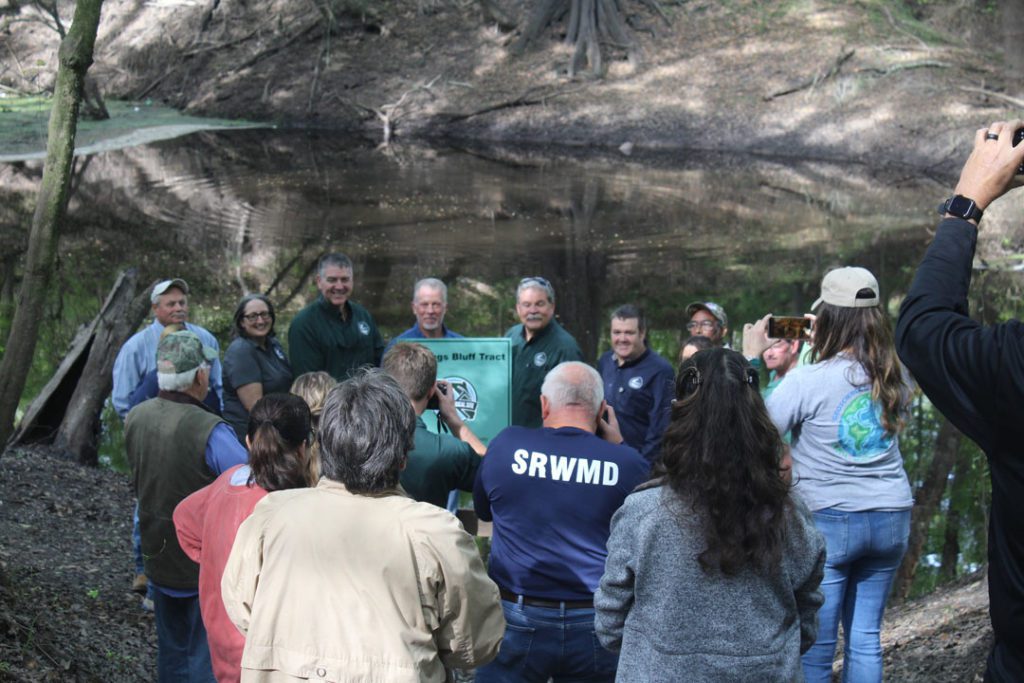
As always, with her hidden treasures and those in plain sight, Florida is delightful. And Florida’s seventh State Geological Site, Jennings Bluff Tract, is no exception.
Story and photos by Sandra Poucher

